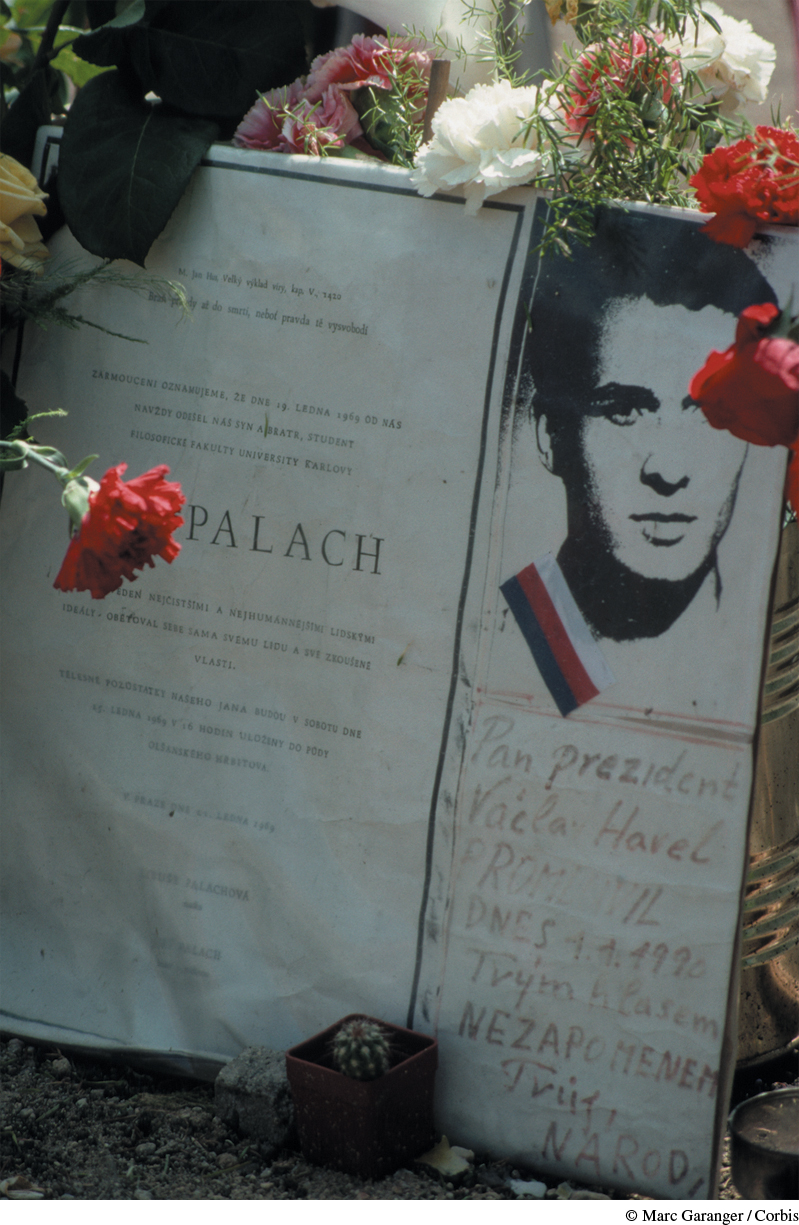Introduction for Chapter 28

IN JANUARY 1969, JAN PALACH, a twenty-one-year-old philosophy student, drove to a main square in Prague, doused his body with gasoline, and set himself ablaze. Before that, he had put aside his coat with a message in it demanding an end to Communist repression in Czechoslovakia. It promised more such suicides unless the government lifted state censorship. The manifesto was signed “Torch No. 1.” Jan Palach’s suicide stunned his nation. Black flags hung from windows, and close to a million people flocked to his funeral. In the next months, more Czech youth followed Palach’s grim example and became torches for freedom.
Before his self-immolation, Jan Palach was an ordinary, well-educated citizen of an increasingly technological society. Having recovered from World War II, the West shifted from a manufacturing economy based on heavy industry to a service economy that depended on technical knowledge in such fields as engineering, health care, and finance. This new service economy has been labeled “postindustrial.” To staff it, institutions of higher education sprang up at a dizzying rate and attracted more students than ever before. Young men like Jan Palach—along with women, minorities, and many other activists in the 1960s and 1970s—far from being satisfied with their rising status, struck out against war and cold war, inequality and repression, and even against technology itself. From Czechoslovakia to the United States and around the world, protesters warned that postindustrial nations in general and the superpowers in particular were becoming technological and political monsters. Before long, countries in both the Soviet and U.S. blocs were on the verge of political revolution.
CHAPTER FOCUS How did technological, economic, and social change contribute to increased activism, and what were the political results of that activism?
The challenges posed by young reformers came at a bad time for the superpowers and other leading European states. An agonizing war in Vietnam weakened the United States, and China confronted the Soviet Union on its borders. In a dramatic turn of events, the oil-producing states of the Middle East reduced the export of oil to the leading Western nations in the 1970s, bringing on a recession. Despite their wealth and military might, the superpowers could not guarantee that they would emerge victorious in this age of increasingly global competition. As the USSR experienced decay in a climate of postindustrial innovation across the West, a reform-minded leader—Mikhail Gorbachev—initiated new policies of economic and political freedom. It was too late: in 1989, the Soviet bloc collapsed, an event brought about in part by countless acts of protest, not least of them the individual heroism of Jan Palach and his fellow human torches.